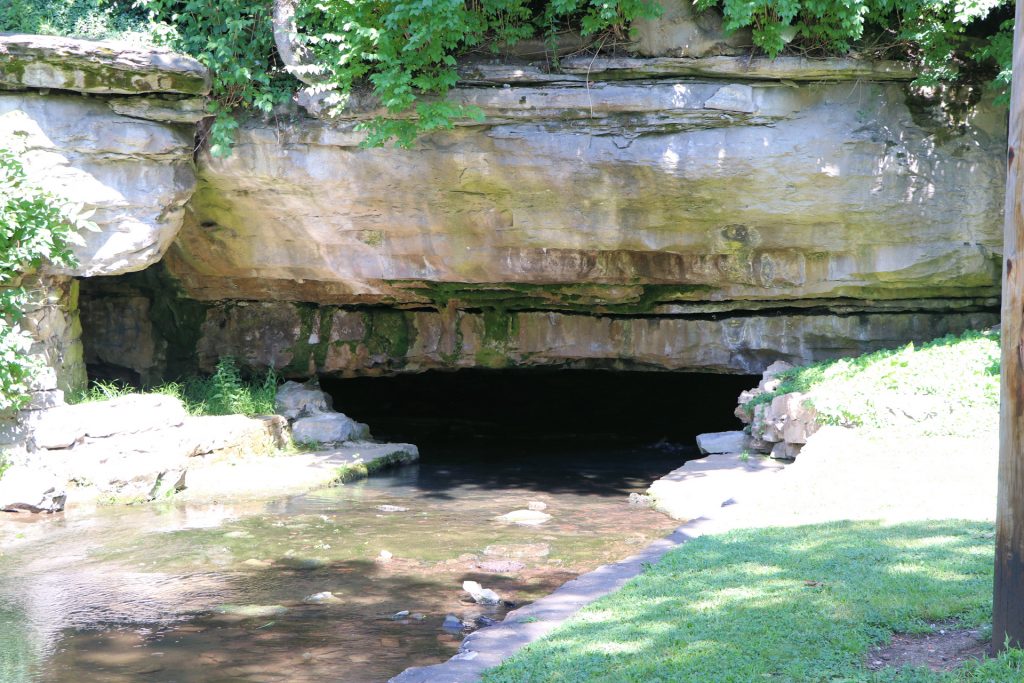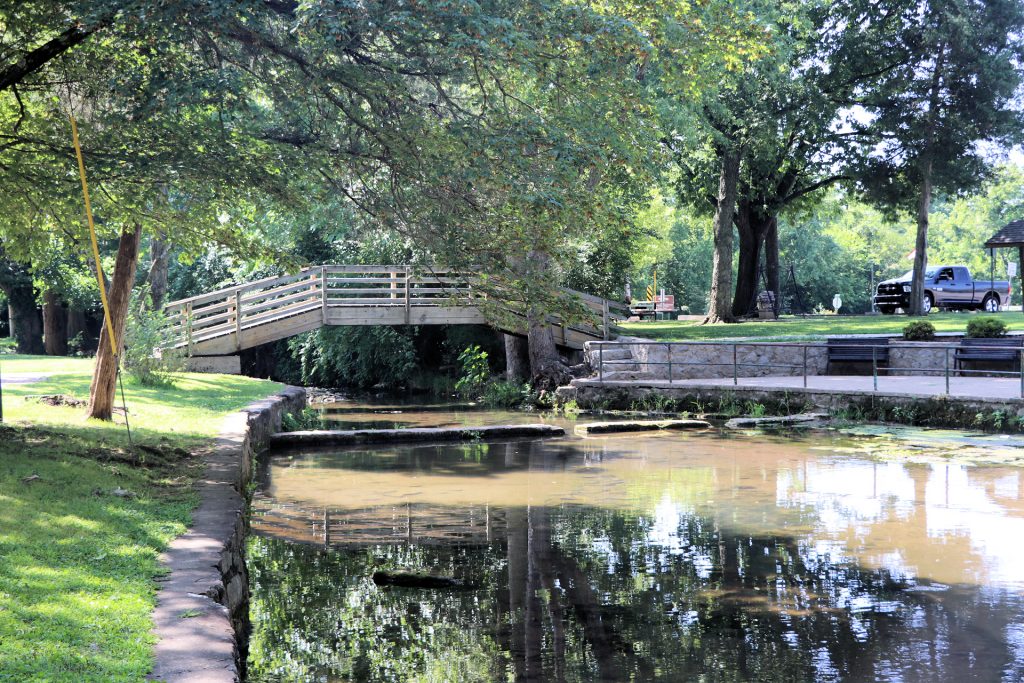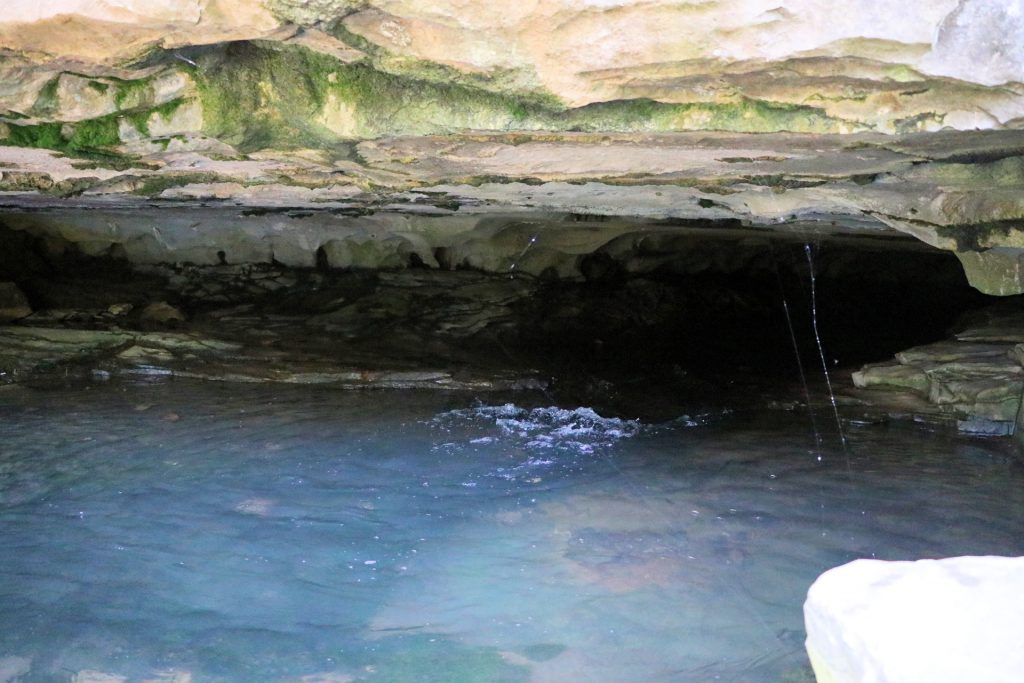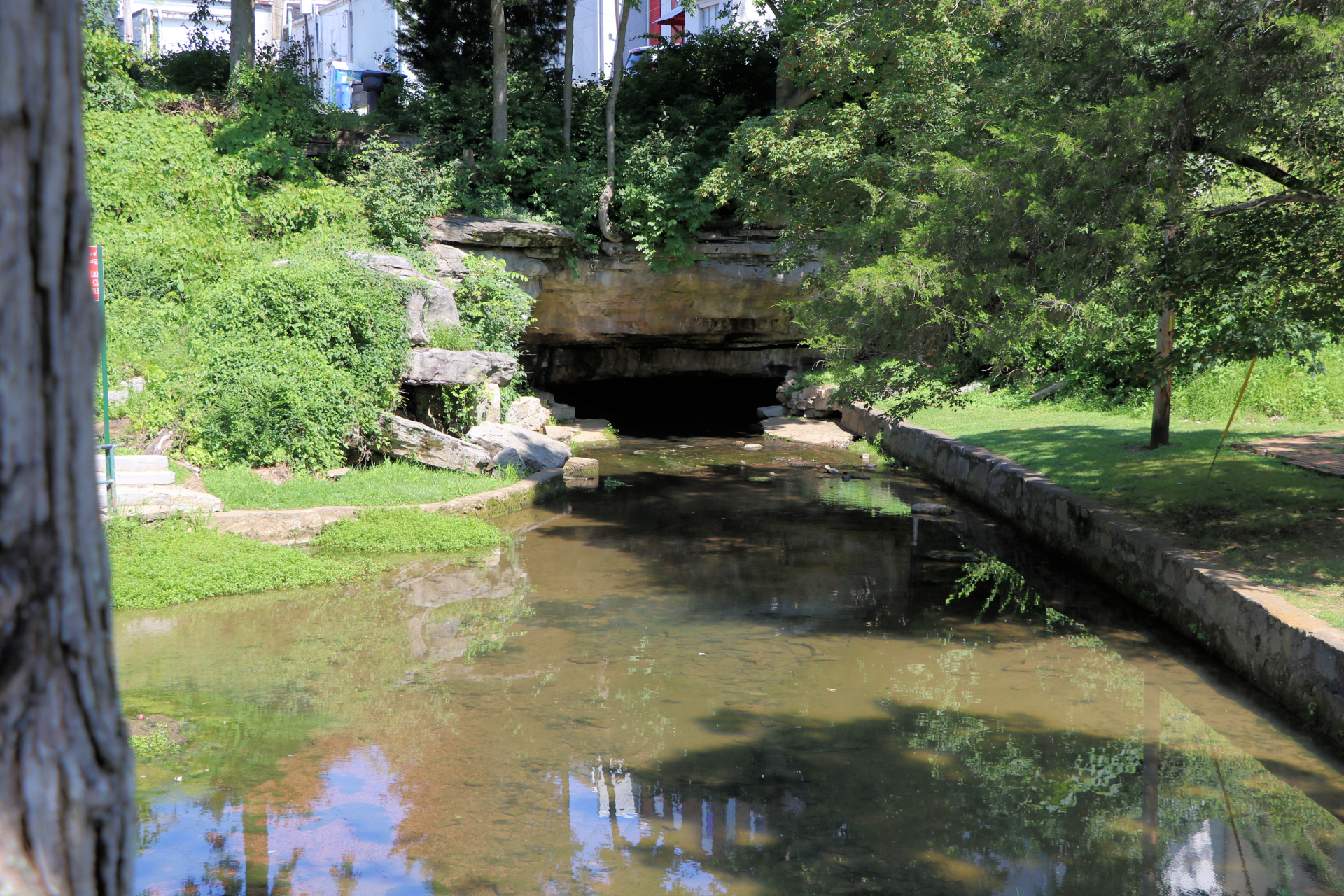Downtown Princeton, Kentucky is home to a small park featuring a beautiful cave with spring waters coming out of the ground. The downtown area is situated on top of the cave and the spring, known as Big Springs Cave.
Before Princeton came into existence, the first community was known as Eddy Grove. The name came from the spring’s swirling waters, or “eddies”, which is the source of today’s Eddy Creek.

In 1799, William Prince was granted 1,700 acres of land near the spring for his service during the American Revolutionary War. He built Shandy Hall, which was a brick home and a tavern near the cave spring. Another nearby landowner, Thomas Frazier, granted 40 acres around the old Eddy Grove community in order to create a new town. In 1817, Princetown was born, later becoming simply Princeton.
How any of these early settlements in the Four Rivers region began is interesting, and Princeton is no exception. Not being near any navigable river, how is it that these gentlemen knew about Big Springs Cave and how did they find it?
Several ancient buffalo trails converged at Big Springs Cave and were used by Native Americans for centuries prior to the arrival of European settlers. No doubt these men explored and used these old but well-traveled pathways. Finding three intersecting at one location with a great source of fresh water proved to be an ideal location for a community.
The three known trails were the Old Saline Trace (now known as Kentucky 286) toward Nashville, Eddy Trace (a road that extended to a tribal settlement in Palmyra, Tennessee) and the Varmint Trace which stretched to another settlement near Iuka, Kentucky. The later two Indian settlements were located on the Cumberland River.
Stagecoach routes used these ancient Indian paths and Princeton would eventually become a hub for the western Kentucky region in the mid-1800s.
Princeton also became a stopping point for the Cherokee with their western march toward Oklahoma. Several thousand come through here in 1838-1839. This “Trail of Tears” route also passes through Port Royal, Tennessee and Mantle Rock near the Ohio River.

Today the park is a nice place to relax and spend some time with nature. However, don’t drink the water coming from the cave. It is well documented to contain elevated traces of E. coli bacteria due to the underground karst system being contaminated with waste. Four Rivers Watershed Watch monitors the site, providing education about wastewater runoff over the Western Pennyroyal Karst System.
The cave is not accessible by person due to its low clearance. You can learn more about Big Springs Cave and the karst system with interpretive signs at the park.






